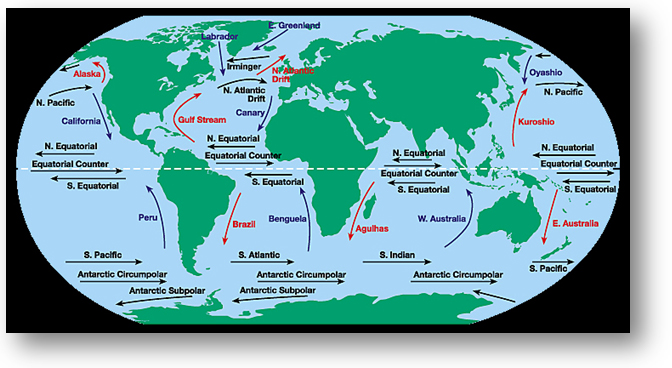![]() Watch this video clip about ocean currents.
Watch this video clip about ocean currents.
Source: Bill Nye The Science Guy on Ocean Currents, TheRealBillNye, YouTube
Now that you have a little background knowledge about ocean currents, study the map below and answer the questions that follow.

Source: Surface Currents, Windows To The Universe.



